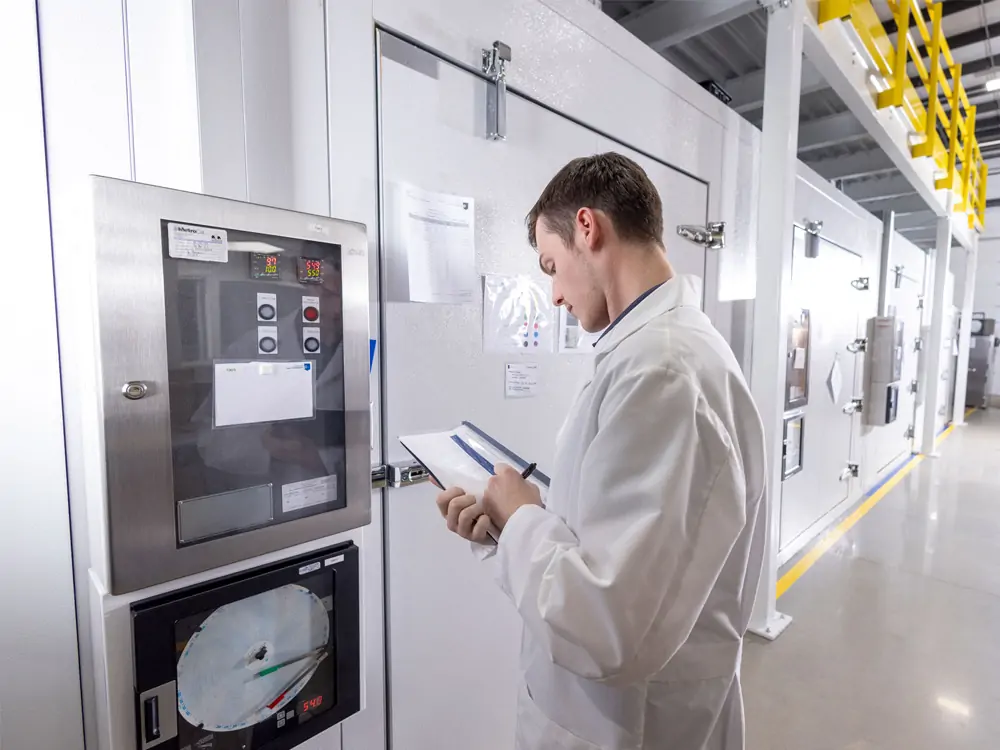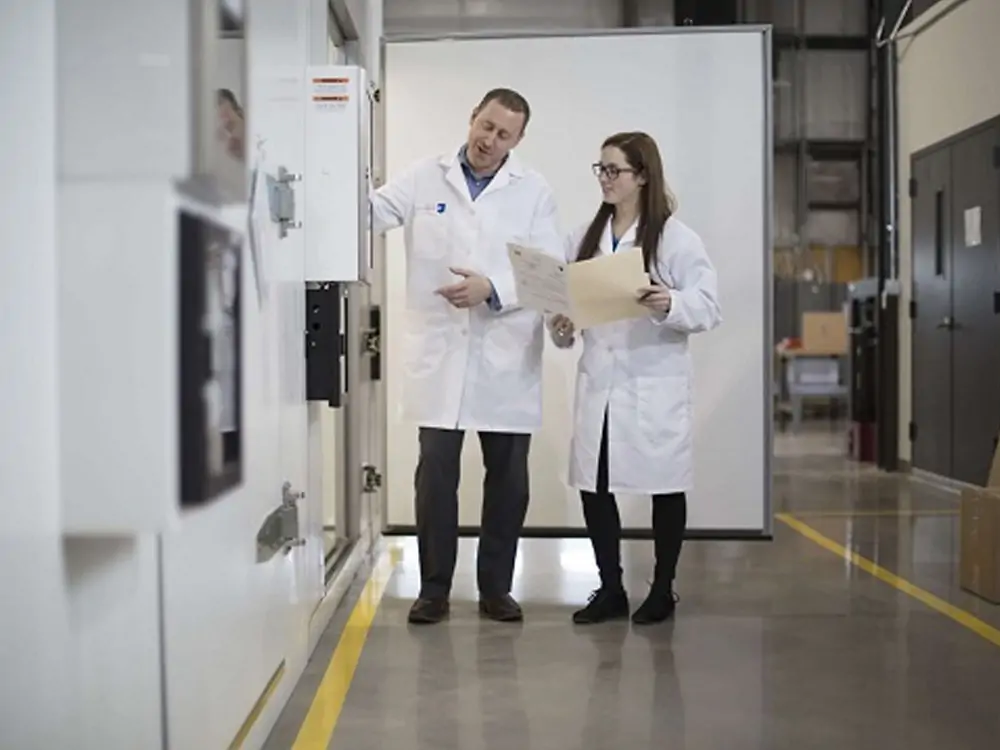UV tester and Xenon lamp aging tester are common artificial aging equipment. They simulate the natural light of UV and Xenon radiation to conduct aging tests on materials. Besides, to the material properties of the material itself. The service life of the material is related to the storage or use of the material environment. The aging of materials is mainly manifested in color changes, performance degradation ect..
Aging of materials in natural environment often takes years, decades, or even centuries. Simulating the test without accelerating the situation would incur unbearable time costs. Thus, UV or Xenon aging simulate the aging of materials in natural environment. But which type of aging should we use?
The difference between the UV test chamber and xenon lamp aging test chamber

(1) Type of light source:
Ultraviolet aging test chamber using ultraviolet lamps as the main light source. UV lamps emit UV light to simulate solar UV radiation.
Xenon lamps are used as the main light source in xenon aging test chambers. Xenon lamps emit light closer to the natural spectrum.
(2) Scope of use:
UV aging tester is mainly used to simulate UV irradiation environment . It tests the aging performance of materials under ultraviolet radiation. Fluorescent UV lamps are like general lighting cold fluorescent lamps in electrical principle. But can generate more ultraviolet light rather than visible or infrared light.
However, xenon aging test chamber can simulate a wider range of light environments.It can simulate ultraviolet, visible and infrared light.
(3) Trigger wavelength:
UV testers use a wavelength of 295nm or 313nm for inducing substrate aging. While it uses fluorescent UV light to mimic the damaging effects of sunlight.
The operator can set the spectrum of different wavelengths of the xenon lamp aging box. This can meet the aging needs of different materials. The spectral range of xenon lamps largely matches that of sunlight. Xenon lamps have a spectrum between 295 and 800 nanometers. It can test products that are sensitive to the long wavelengths of ultraviolet light, visible light and infrared light.
(4) Radiation intensity:
UV test chambers usually have high UV radiation intensity . It can be more quickly on the material UV aging test.
To meet the size and needs of different materials. Xenon lamp aging chamber can according to the need to adjust the radiation intensity.
(5) Scope of application:
Due to different light sources and radiation intensity. UV test chamber is more suitable for UV aging test on plastic, paint, rubber and other materials.
Xenon lamp aging chamber is suitable for aging test on materials such as textiles ect..
(6) Control system:
Both test chambers are equipped with intelligent control system. It can precisely control the light source parameters, temperature, humidity ect..
But xenon lamp aging test chamber has more functions and more complex control system. It adapts to more complex test requirements.
(7) Usage:
The UV weathering tester mainly adopts fluorescent UV lamp as light source. By simulating the phenomena of condensation and UV radiation in natural sunlight. It conducts accelerated weathering test to get the results of material weathering. It simulates natural climatic conditions. For example, UV, condensation, high temperature, rain, high humidity, darkness, etc..By reproducing these conditions, it combines them into one cycle. And let it perform automatically to complete the number of cycles.
And to reproduce the destructive light waves present in different environments. Xenon aging chambers use xenon arc lamps to simulate the full sunlight spectrum. It can provide appropriate environmental simulation and accelerated testing for quality control.
The material aging test method

Material aging test is the process of testing the durability of materials. This test can simulate a variety of adverse conditions encountered in the actual use . Such as sun, rain, high temperature, low temperature, oxidation and so on. Among them, UV aging and xenon lamp aging are two commonly used aging methods. We need to determine which aging method is more suitable for our needs.
(1) Ultraviolet aging
UV aging is a method of using UV radiation to simulate sunlight exposure method. It mainly simulates the aging process of materials under prolonged ultraviolet radiation. The advantages of UV aging are cheap equipment, simple operation, easy to control . Besides, it can simulate the UV radiation in the real environment. So the test results obtained are of reference value.
In UV aging test, we need to use a UV aging tester. It usually includes a display platform and a UV lamp for radiating the specimen. The specimen should be flat, usually in the form of a plate or film. To watch the aging of specimens at different points in time. The test requires control of conditions such as irradiation dose, temperature and humidity. The most commonly used standards are ASTM G154 and ISO 4892-3. Which specify the UV aging conditions, equipment, specimen size and irradiation time.
(2) xenon lamp aging
Xenon lamp aging uses a xenon lamp to simulate the spectrum. Which includes ultraviolet, visible and infrared light. It has the advantage of simulating the daylight spectrum. It is realized that many UV and visible light exposures can be simulated at the same time. Thus, it can more comprehensively simulate solar radiation at different times and locations.
For xenon aging testing, we need a xenon aging tester. It works similarly to a UV lamp, but uses a xenon lamp that delivers the daylight spectrum. Test materials and samples are tested uniformly. The test conditions are similar to those of UV aging. This includes humidity, temperature, irradiation dose, specimen materials, etc.. ASTM G155 and ISO 4892-2 are the standards for xenon lamp aging tests.
The choice of aging method
In the material aging test, we need to choose what aging method to use according to the test needs. Here are some reference factors:
Specimen material:
UV aging is more popular for testing polymers and coatings. while Xenon aging can also be used for polymer materials.
Test environment:
If you need to test the durability of materials in different seasons、regions, or at different altitudes. Xenon lamp aging is recommended.
Purpose of testing:
Considering the durability of materials under solar radiation requires the use of UV-aging. If it tests the response and stability to radiation at different wavelengths. Xenon lamp aging is more appropriate.
Both UV and Xenon aging have their advantages and disadvantages. To get comprehensive test results. We need to define the test purpose, material and environment, and select the test method. In practice, you can use different aging methods in combination as needed. To get more information and guide the improvement of the actual use of the process.
The choice of artificial accelerated aging test conditions

The question is actually which aging factors should be simulated. Many environmental factors may have an effect on the aging of polymeric materials during their use. If the operator is aware of the main aging factors in advance, he can select the test method accordingly.
By considering storage and transportation, we then choose the test method.For example, rigid PVC profiles processed from polyvinyl chloride.And add pigments, stabilizers and other additives. Allow hard PVC profiles to be used outdoors.From the aging mechanism of polyvinyl chloride, polyvinyl chloride decompose by heat. From environmental considerations, oxygen, ultraviolet light, heat and moisture cause profile aging.
Thus, the national standard GB/T8814-2004 “doors, windows with unplasticized polyvinyl chloride profiles”. Both the provisions of the light and oxygen aging test method. The use of GB/T16422.2 “plastic laboratory light exposure test method Part II: Xenon arc lamp” aging 4000h or 6000h. Simulated outdoor ultraviolet and visible light, temperature, humidity, rainfall and other factors. the provisions of the thermo-oxidative aging project: after heating, temperature 150 ℃ for 30 min. To test the heat resistance of the profile. Visual observation of whether bubbles, cracks, pockmarks or separation phenomenon.
For example, the main cause of fading and discoloration of shoes is due to UV rays.Thus, it is necessary to use the UV light box for yellowing resistance test. Commonly used footwear yellowing resistance test chamber using 30W UV lamps. Samples away from the light source 20cm, irradiation after 3h to observe the color change. During transportation, the environment of stuffy heat and humidity cause spotting and discoloration. This simulates the high humidity and heat inside the container. Before transportation, it needs carrying out the heat and humidity aging test. Under the condition of 70℃ and 95%RH, observe the appearance and color change after 48h test.
Conclusion:
There is no single test technique for all materials and application conditions. Which aging chamber to choose depends on the time as well as and cost budget for testing purposes.
Xenon aging and UV aging are both widely used test methods. The principles of these two aging methods are completely different. Xenon exposure test chambers emulate the full solar spectrum. This includes UV, visible and infrared light, and is intended to simulate sunlight. The UV aging test does not attempt to mimic the sun’s rays. The UV aging tester simulates the damaging effects of sunlight. It does not simulate sunlight. Durable materials placed outdoors age easily under the influence of short-wave UV light.
The method of UV and Xenon aging tester testing depends on the testing needs. Each method can be very effective. We select the equipment based on the application conditions, degradation patterns and budget .
For more environmental test chamber, Please visit: https://chiuventionclimatechamber.com
For more environmental test simulation programmes,environmental testing knowledge, instrument knowledge, and environmental testing laboratory knowledge, please contact us: [email protected]